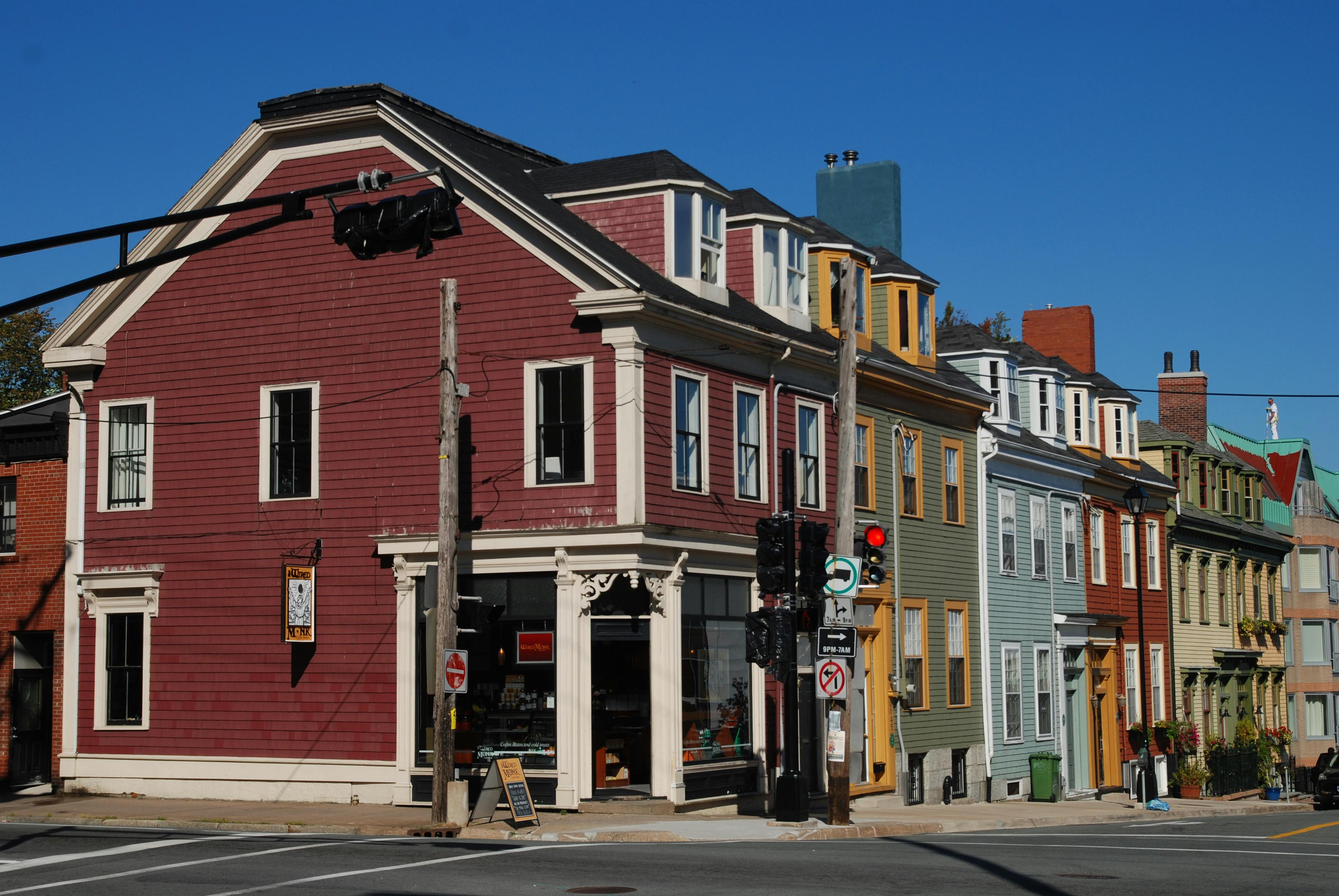Old South Suburb Heritage Conservation District
Consultation has concluded
This project is the recipient of the Canadian Institute of Planners (CIP) 2021 Planning Excellence Award, in the category of Planning Practice: CIP Award for Planning Excellence 2021(External link).
This project is also the recipient of the Atlantic Planners Institute (API) 2020 Planning Excellence Award, in the category of Comprehensive Policies and Plans: API 2020 Award Winners(External link).
The Old South Suburb is a historic suburb which originally developed to the south of the palisade fence surrounding the town of Halifax in the 18th century. Today, the District is located at the southern limit of downtown Halifax, uphill from waterfront lands, overlooking Halifax Harbour to the east. The District includes mixed uses, residential and commercial, and mixed densities, mostly low-rise heritage buildings and several midrise buildings on large consolidated lots developed since the 1950s. The monumental open space at Cornwallis Park, framed by the Hotel Nova Scotian (Westin Hotel) and the Canadian National Railway (Via Rail) Station, characterises the southern extent of the District and the downtown, where Hollis Street turns to join Barrington Street.
The Old South Suburb Heritage Conservation District Plan and By-law H-800 have been reviewed by the Provincial Department of Communities, Culture and Heritage as per Section 19A(5) of the Heritage Property Act. In accordance with Section 19A(5) of the Heritage Property Act, these documents become effective as of the date of approval by the Minister on July 21, 2020.
The Old South Suburb is valued for its associations with the early settlement of Nova Scotia as one of the first contiguous suburbs of the once fortified town of Halifax. The district is valued as an area of traditional architecture. It is also valued for its associations with the early social and economic life of the waterfront town and the vibrant railway industry of the 1920s and 30s.
The Scottish Georgian domestic architectural style is more prevalent in the Old South Suburb than anywhere else outside of Scotland. Further Georgian styles include the large square mansions with hipped roofs and the Palladian style with a triangular pediment. The district was home to many dockyard labourers including a high percentage of Irish residents, especially between 1860 and 1890. Much of this area was known informally as Irishtown for many decades thereafter.
In the 1930s, Halifax was the great eastern terminus of transcontinental rail passenger service in Canada. The Canadian National Railways Station (Via Rail Station) was constructed c. 1930, creating a major southern access point into downtown Halifax by rail. The construction of the Hotel Nova Scotian (Westin Hotel) by the Canadian National Railways, c. 1931, adjacent to the Canadian National Railway (Via Rail) Station speaks of railway affairs during the 1920s and 30s with its emphasis on both passenger traffic and tourism. The Canadian National Railways created Park Nova Scotian (Cornwallis Park), c. 1931, in the railway garden tradition that contributes to the public realm at key railway destinations across the nation. The relationships of these buildings with this open space create a monumental destination and define the southern extent of Halifax's downtown core.

